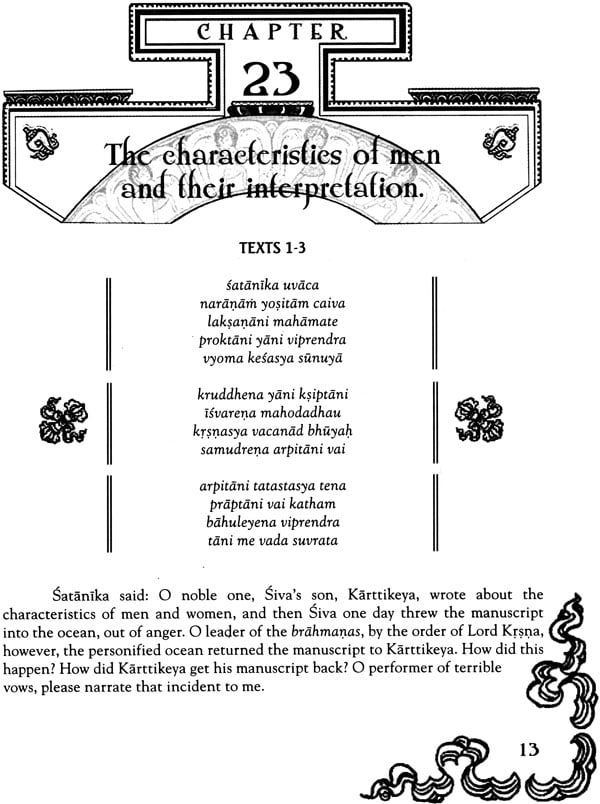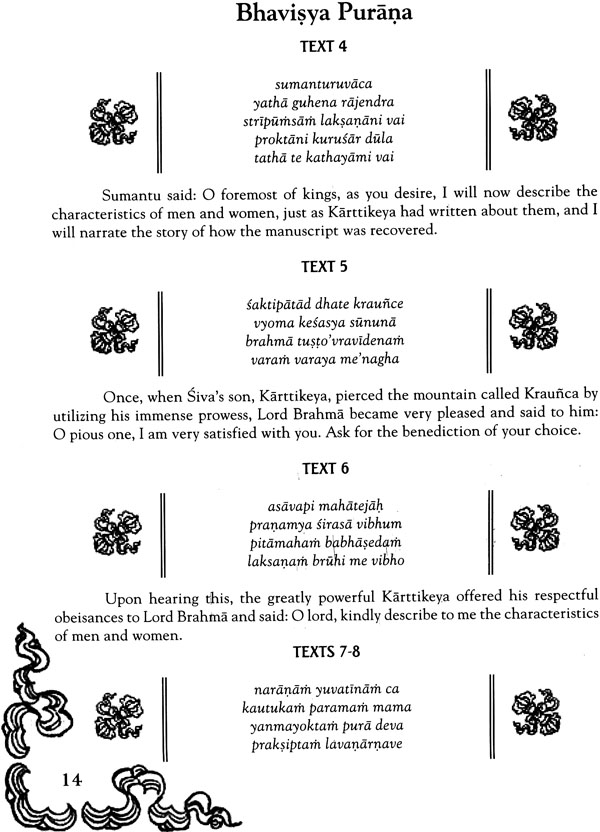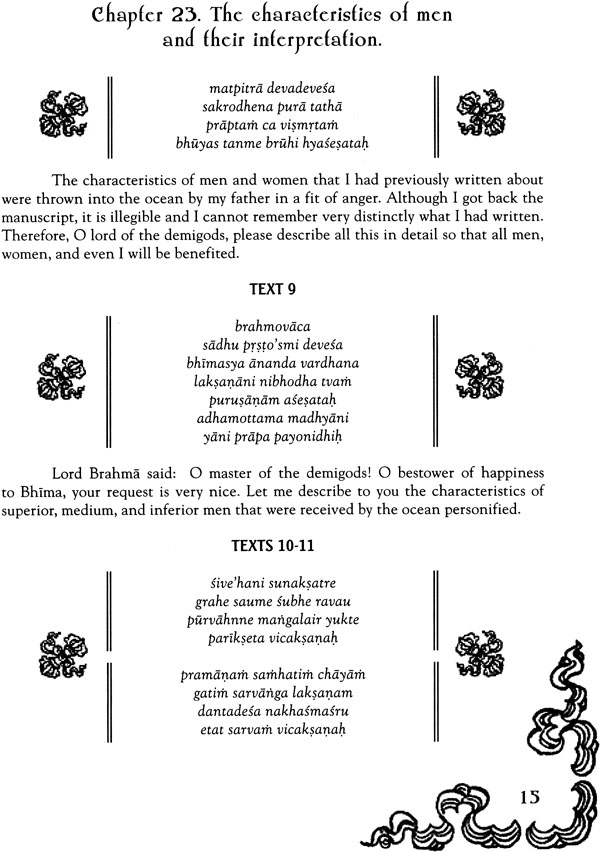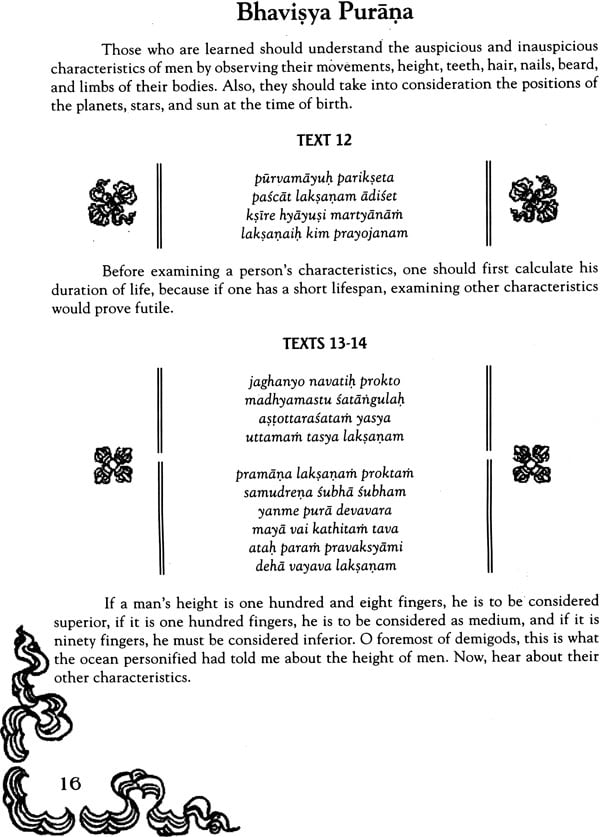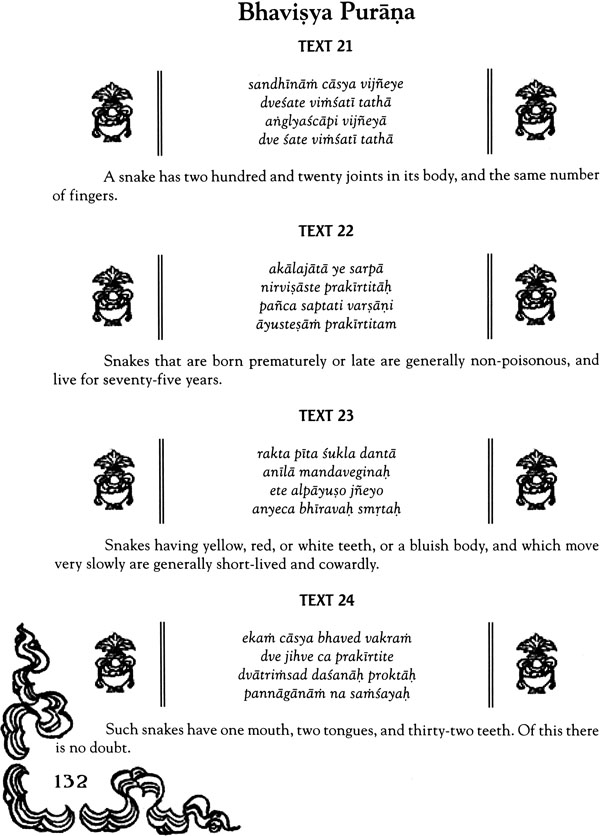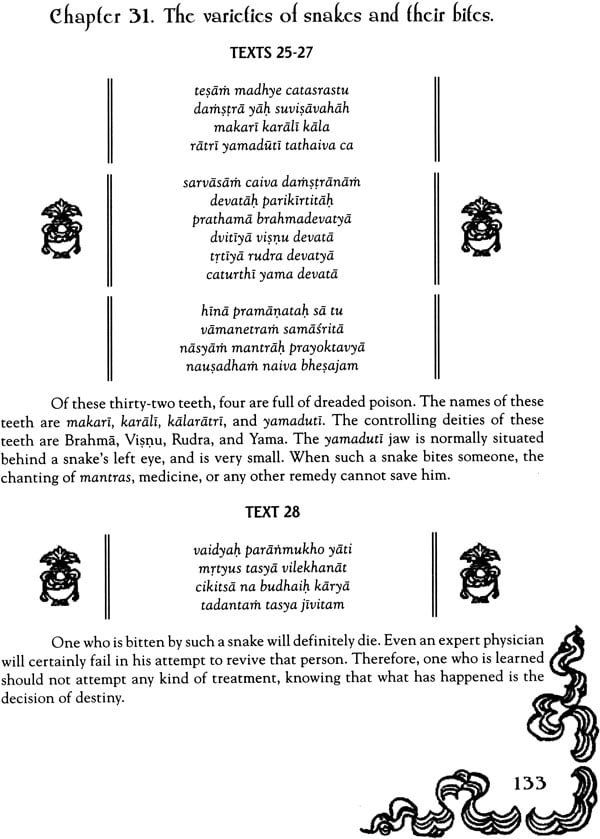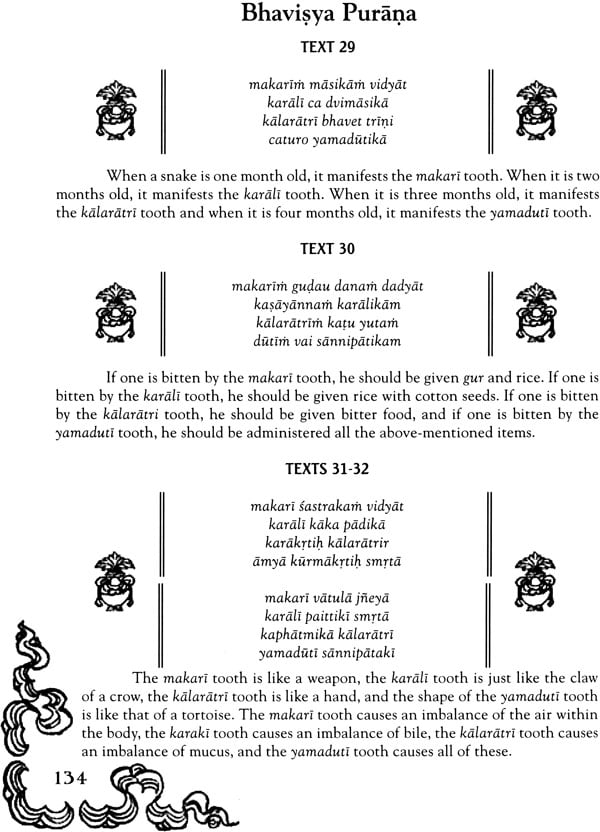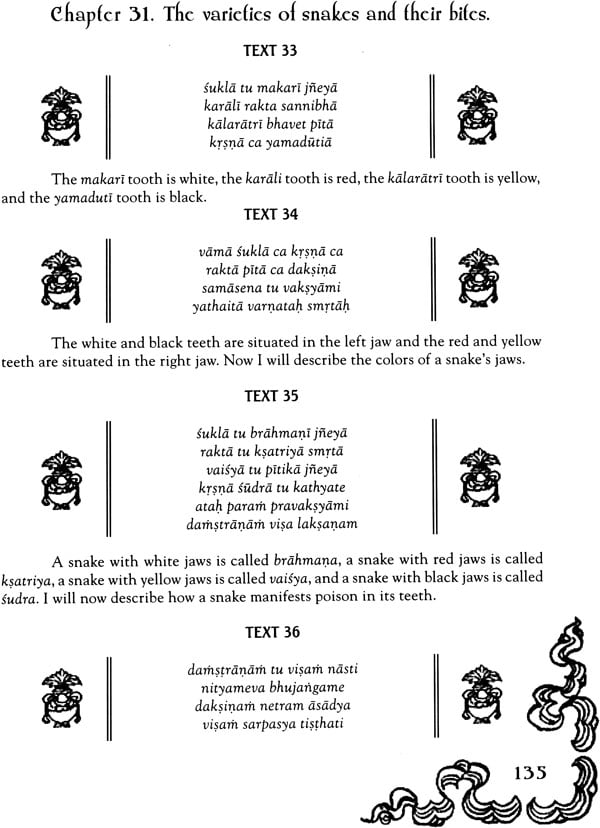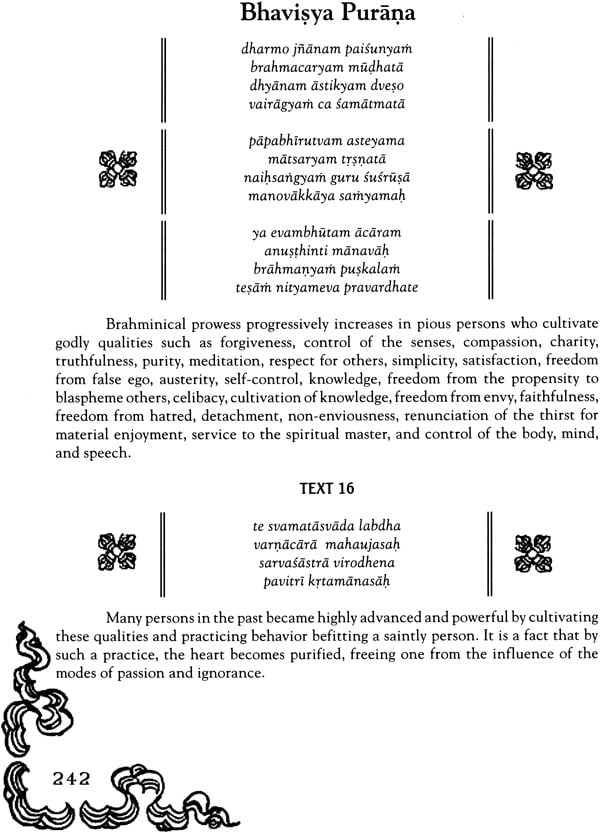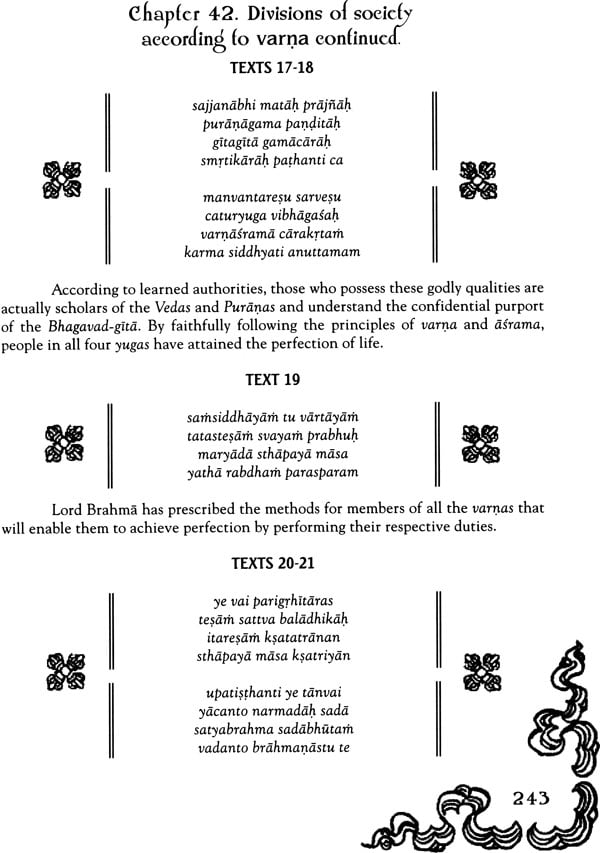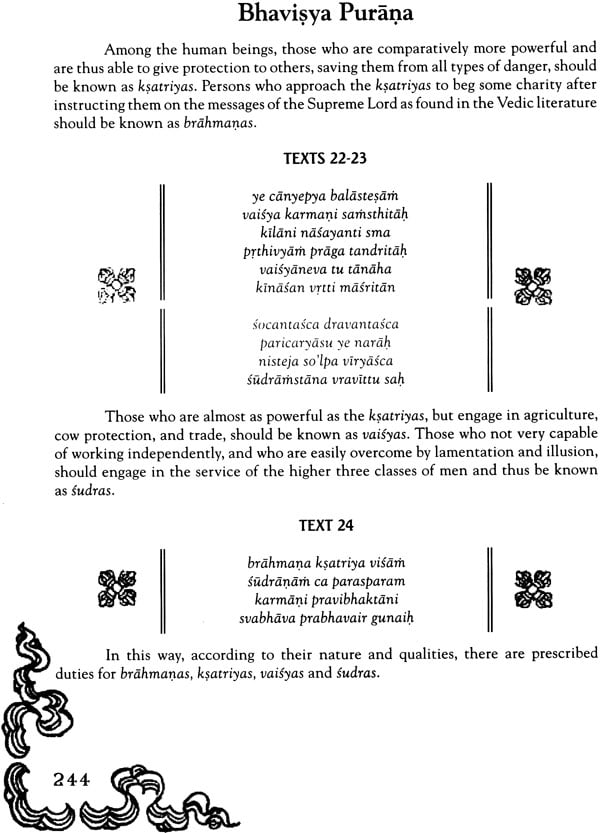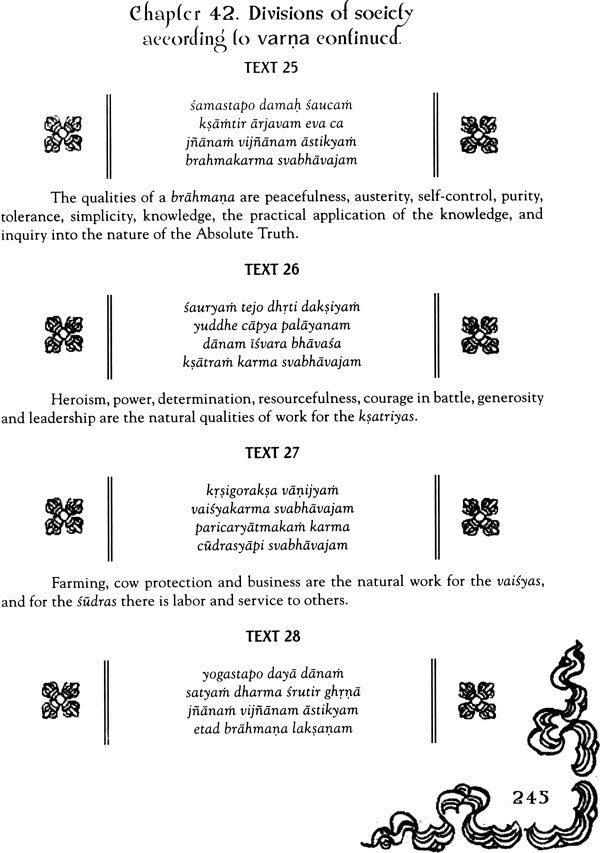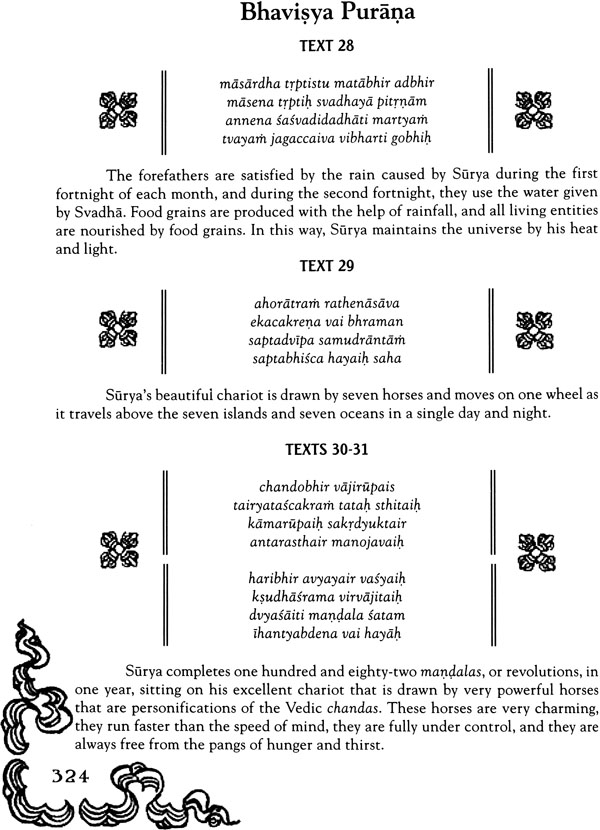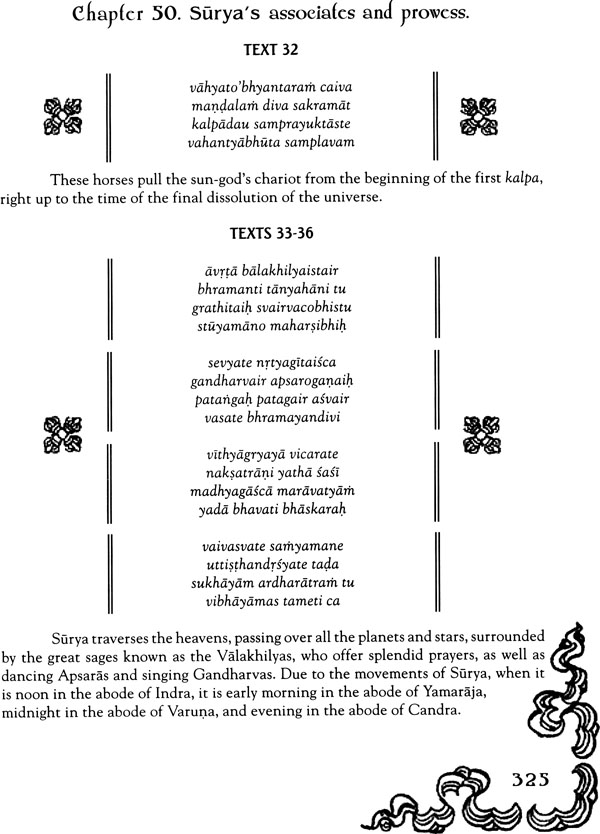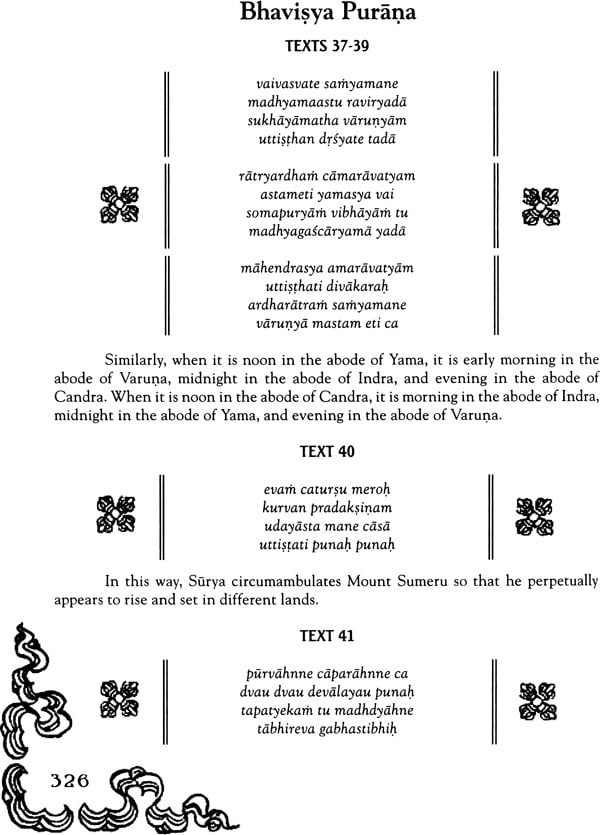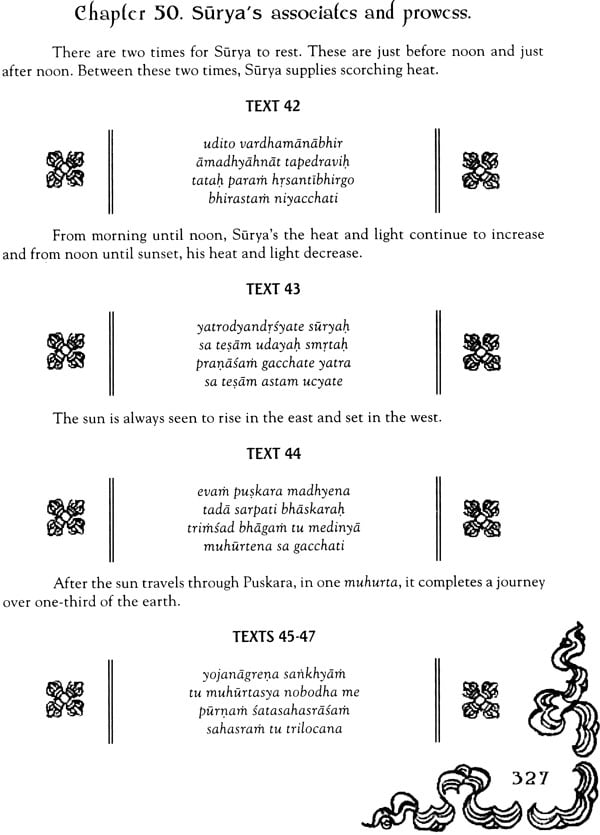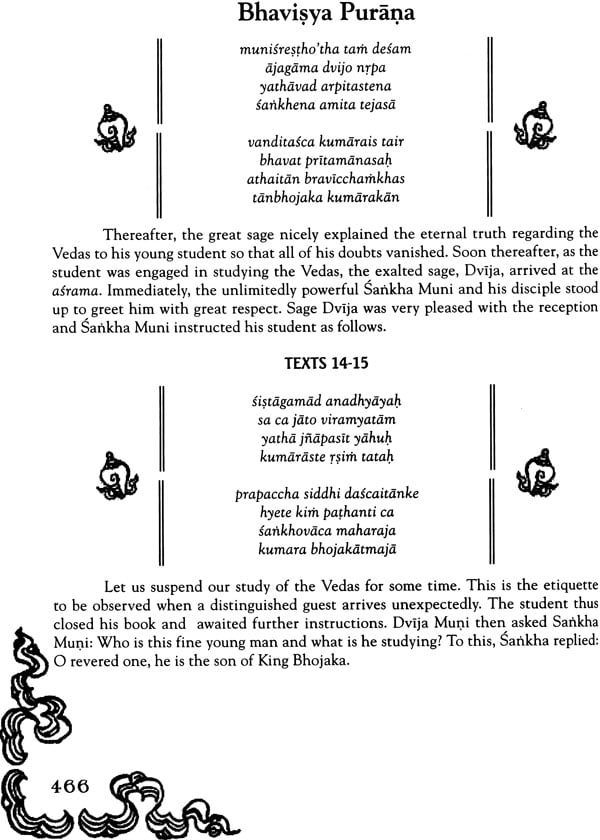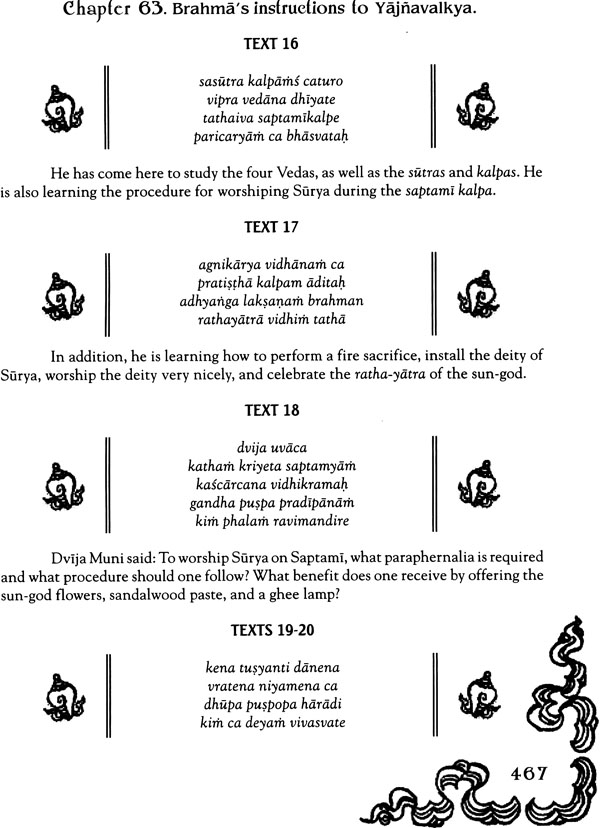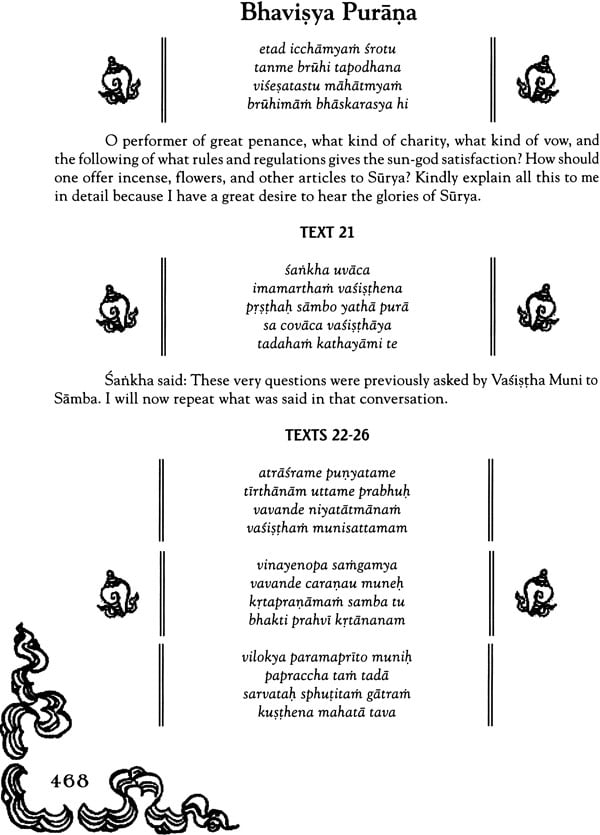
Bhavishya Purana (Volume II)
Book Specification
| Item Code: | IDJ644 |
| Author: | Purnaprajna Dasa |
| Publisher: | Ras Bihari Lal and Sons |
| Language: | Transliterated Text with English Translation |
| Edition: | 2007 |
| ISBN: | 8184030169 |
| Pages: | 492 |
| Cover: | Hardcover |
| Other Details | 9.5" X 7.2" |
| Weight | 1.07 kg |
Book Description
Back of the Book
Any act that is performed while chanting this previously-mentioned mantra will turn out successful because all the planets become satisfied. After chanting this mantra while concentrating into water for seven nights, there can be torrents of rain, or else ponds and well can became dry, and deities in the temples of the demigods can shake, or else be attracted or stunned. Indeed, this mantra can attract a man or woman, even if he or she is thousands of miles away (Chapter 27, texts 27-30)
To become an object of love and affection for people in general and to control the king, one should prepare a thumb-sized deity of Ganapati If one offers incense made from red sandalwood to the Lord within the heat, who is represented by Ganapati, he will become very fortunate (Chapter 29, text 13)
One who, with faith and devotion, fasts while worshiping Surya on this Saptami, which dispels the reactions to all kinds of sinful activities and awards advancement on the path toward transcendental happiness, will gain relief from the threefold material miseries. (Chapter 61, text 35)
Introduction
There are eighteen major Puranas, as stated in the Srimad-Bhagavatam (12.7.23-24): The eighteen major Puranas are the Brahma, Padma, Visnu, Siva, Linga, Garuda, Narada, Bhagavata, Agni, Skanda, Bhavisya, Brahma-vaivarta, Markandeya Vamana, Varaha, Matsya, Kurma and Brahmanda Puranas.
The number of verses in each Purana is listed in other verses of the Srimad-Bhagavatam (12.13.4-9): The Brahma Purana consists of ten thousand verses, the Padma Purana of fifty-five thousand, Sri Visnu Purana of twenty-three thousand, the Siva Purana of twenty-four thousand and Srimad-Bhagavatam of eighteen thousand. The Narada Purana has twenty-five thousand verses, the Markandeya Purana nine thousand, the Agni purana fifteen thousand four hundred, the Bhavisya Purana fourteen thousand five hundred, the Brahma-vaivarta Purana eighteen thousand and the Linga Purana eleven thousand . The Varaha Purana contains twenty-four thousand verses, the Skanda Puranas eight-one thousand one hundred, the Vamana Purana fourteen thousand, the Garuda Purana nineteen thousand and the Brahmanda Purana twelve thousand. Thus the total number of verses in all the Puranas is four hundred thousand. Eighteen thousand of these, once again, belong to the beautiful Bhagavatam. This is the first edition of an English Bhavisya purana to be published ad so naturally it will be if interest to scholars of Vedic literature. As the name implies, this book gives predictions into the future and this is if special interest to one all. This second volume deals primarily with worship of the sun-god. While going though this volume, you may become puzzled because the glorification of the sun-god seems to indicate that e is the Supreme Personality of Godhead.
In the chapter summary of Canto Five, chapter twenty-two of Srimad-Bhagavatam, Srila Prabhupada wrote: The sun-god, who controls the affairs of the entire universe, especially in regard to heat, light, seasonal changes ad so on, is considered an expansion of Narayana. He represents the three Vedas-Rg, Yajur and Sama-and therefore he is known as Trayimaya, the form of Lord Narayana. Sometimes the sun-god is also called Surya Narayana. The sun-god has expanded himself in twelve divisions, and thus he controls the six seasonal changes and causes winter, summer, rain and so on. Yogis and karmis following the varnasrama institution, who practice hatha or Astanga-yoga or who perform agnihotra sacrifices, worship Surya Narayana for their own benefit. The demigod Surya is always in touch with the Supreme personality of Godhead, Narayana.
As explained in this volume, the sun-god is not merely one of the demigods. This is confirmed by Srila Prabhupada in his purport to Srimad-Bhagavatam 5.23.3: It is also significant that the predominating deities of even the greatest planets have been of fered their exalted posts because of the very valuable pious activities they performed in previous births. This is indicated herein by the words karma-nirmita-gatayah. For example, as we have previously discussed, the moon in called Jiva, which means that he is a living entity like us, but because of his pious activities he has been appointed to his post as the moon-god. Similarly, all the demigods are living entities who have been appointed to their various posts as the masters of the moon, the earth, Venus and so on because of their great service and pious acts. Only the predominating deity of the sun, Surya Narayana, is an incarnation of the Supreme Personality of Godhead.
At the end of this volume, Surya himself discloses the fact that he is not the Supreme Personality of Godhead. When asked who he worships, he responds that he worships the Supreme Lord, who is his eternal master. It is advised that for achieving good health and a cure for a diseased condition, one should worship the sun-god. With this in mind, let me hope that these words find you in good health.
From the Jacket
This is the first edition of an English Bhavisya Purana to be published and so naturally it will be of interest to scholars of Vedic literature.
As the name implies, this book gives predictions into the future and this is of special interest to one and all. This second volume deals primarily with the worship of the sun-god. While going though this volume, you may become puzzled because the glorification of the sun-god seems to indicate that he is the Supreme Personality of Godhead.
In the chapter summary of Canto Five, chapter twenty-two of Srimad-Bhagavatam, Srila Prabhupada wrote: The sun-god, who controls the affairs of the entire universe, especially in regard to heat, light, seasonal changes and so on, is considered an expansion on Narayana.
A similar statement is there is the Bhavisya Purana, in which it is said, "Even if born of a lowly family, a person who follows the Ratha-yatra car when the Deities pass in front or fro behind will surely be elevated to the position of achieving equal opulence with Visnu."
| Introduction | 9 | |
| Chapter 23. | The characteristics of men and their interpretation | 13 |
| Chapter 24. | Further characteristics of men and their interpretation | 31 |
| Chapter 25. | Characteristics of men continued | 55 |
| Chapter 26. | The characteristics of women and their interpretation. | 63 |
| Chapter 27. | Glories of worship of Ganapati | 75 |
| Chapter 28. | The procedure for worshiping Ganapati | 85 |
| Chapter 29. | The vow of Siva Caturthi | 95 |
| Chapter 30. | The vow of Naga Pancami | 111 |
| Chapter 31. | The varieties of snakes and their bites | 127 |
| Chapter 32. | Symptoms exhibited by a person who has been bitten by a black cobra | 141 |
| Chapter 33. | A description of the variety of snakes | 149 |
| Chapter 34. | The vow of Naga Pancami | 165 |
| Chapter 35. | The vow of Naga Pancami in the month of Bhadra | 183 |
| Chapter 36. | The completion of the Naga Pancami vow. | 185 |
| Chapter 37. | The glories of Sasthi | 187 |
| Chapter 38. | The truth about varnasrama | 191 |
| Chapter 39. | A doubt whether human society can be divided into social orders. A Brahmana defined | 203 |
| Chapter 40. | The samskaras for a brahmana | 217 |
| Chapter 41. | Divisions of society according to varna | 227 |
| Chapter 42. | Division of society according to varna continued. | 239 |
| Chapter 43. | Introduction to the worship of Karttikeya | 249 |
| Chapter 44. | The glories of worshiping Karttikeya | 251 |
| Chapter 45. | The vow of Saptami and the pastimes of Surya | 255 |
| Chapter 46. | The glories of Surya, the sun-god | 275 |
| Chapter 47. | The procedure for worshiping Surya, and the glories of such worship | 289 |
| Chapter 48. | Ratha Saptami and other vows in relation to Surya | 299 |
| Chapter 49. | Surya's chariot and journey across the sky. | 303 |
| Chapter 50. | Surya's associates and prowess | 317 |
| Chapter 51. | The glories of Surya | 331 |
| Chapter 52. | The procedure for celebrating the chariot festival of Surya | 337 |
| Chapter 53. | The ratha-yatra of Surya and counteracting in influence of inauspicious planets | 359 |
| Chapter 54. | Further description of the ratha-yatra | 373 |
| Chapter 55. | The glories of Surya's ratha-yatra | 381 |
| Chapter 56. | The glories of Ratha Saptami | 393 |
| Chapter 57. | The glories of Surya | 401 |
| Chapter 58. | Brahma discloses to the sages a method for worshiping Surya | 407 |
| Chapter 59. | Conversation between Brahma and Dindi | 415 |
| Chapter 60. | The glories of worshiping Surya | 427 |
| Chapter 61. | Further discussion of worship of Surya | 439 |
| Chapter 62. | The vow of Rahasya Saptami | 455 |
| Chapter 63. | Brahma's instruction to Yajnavalkya | 463 |
| Chapter 64. | Conversation between Brahma and Surya | 485 |
